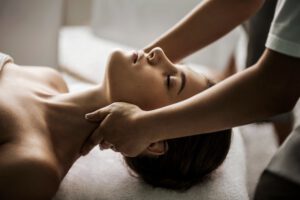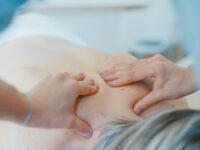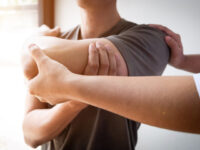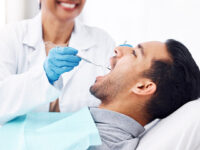Preparing For a Massage
Tulsa Massage is the manipulation of the skin, tendons, and muscles. It can be relaxing but is also used to treat pain and muscle tension.
Studies have found that massage decreases heart rate and blood pressure and increases blood circulation and lymph flow. It may also help control pain, aches, and anxiety.
Massage has been a part of many cultures’ healing traditions for thousands of years. In the past, it was considered a luxury for the wealthy or a code word for illegal activities, but now it’s widely available and recognized as an important tool in both physical and mental health. Different types of massage provide a variety of benefits, from relieving pain and tension to improving your overall wellness.
A study suggests that getting a massage can help reduce anxiety. This is because massage can stimulate your body’s parasympathetic nervous system, which focuses on the regular and day-to-day activities that lead to relaxation and rest. As a result, it can decrease the stress hormone cortisol and increase the neurotransmitters serotonin and dopamine, which are known to regulate your mood.
Back pain is the most common reason people seek massage, and research confirms that it can relieve tension and improve mobility in those with chronic low back pain. Some forms of massage, such as trigger point therapy and acupressure, focus on specific tight areas in the body’s muscles. The pressure applied by the therapist’s fingers, hands, elbows and feet can help relieve that tension, decreasing the frequency and severity of back pain.
Another type of massage is myofascial release, in which the therapist applies pressure to the fascia, a connective tissue that wraps around your muscles, bones and organs. During this type of massage, the therapist may use their fingers, toes and specialized devices to release the tightness in that tissue.
Some studies suggest that massage can reduce fatigue in people with fibromyalgia, a condition that causes joint and muscle pain. Researchers aren’t sure why this happens, but it might be that the lowered levels of stress hormones and inflammatory chemicals after a massage can help people with fibromyalgia relax and sleep better. Also, massage may improve the function of a person’s lungs and heart when performed regularly, as it can reduce the tenseness of the arteries and veins, helping them work more efficiently. In addition, massage has been found to boost the immune system by increasing white blood cell count and reducing inflammation.
Techniques
As a massage therapist, it is important to be able to customize your approach and technique based on each client’s unique needs. For example, some people may require a lighter touch than others. This is why it’s important to ask your clients what they’re looking for before beginning a session. If a client says they are very sensitive to pressure, you might consider using the vibration technique instead of kneading or deep tissue techniques.
Effleurage is a massage technique that involves light pressure with hands laid flat, side by side and gliding over the skin. It is usually the first and last technique used during a massage. You can also use your knuckles or forearms in place of your fingers when performing this massage stroke. It is a great way to ease the muscles and help your client relax before diving into more intense massage techniques such as tapotement or friction.
The next massage technique is kneading. In this technique, the therapist uses their thumb and the first two fingers to press into the muscle or tissue. This can help relieve tension, stiffness, and pain by breaking up adhesions or knots. In addition to reducing the effects of chronic stress, kneading can also improve circulation, reduce muscle fatigue, and increase flexibility.
Another great massage technique is vibrating. This is typically done at the end of a session and helps to soothe the body and stimulate the nerves. It is especially useful for those who are sensitive to greater intensities of pressure or who have scar tissue.
Sports massage is a technique that can be beneficial for individuals with physically demanding jobs or lifestyles such as athletes and fitness trainers. This massage technique can help to relieve muscular tension, reduce pain, and mobilize soft tissues. It can also help to decrease the risk of injuries and improve performance.
Another great massage technique is trigger point release. This is a special type of massage that targets trigger points, which are knots in the muscles that can cause discomfort and inflammation. This type of massage can help to alleviate the symptoms of chronic tension, such as headaches, muscle strains, and back pain.
Preparation
A massage session is a great time to relax, but the experience can be enhanced with a bit of preparation. First, make an appointment at a time that is convenient to you and your schedule. Try to allocate as much of your day to the massage as possible, avoiding any major tasks just prior or following the session. You may find it helpful to consider scheduling the massage in the morning, as this can help you start your day feeling relaxed and stress-free.
It is also a good idea to arrive at the massage session early. This will allow you to have time to park, and it will give you the opportunity to complete any necessary paperwork. This is particularly important if it is your first massage, as you will probably have to fill out some basic medical information that can take a little while to complete.
Once you have arrived, take a moment to settle into the massage room. It should be clean and comfortable, and it is best to have all the supplies you need, such as a massage table, oils, tissues, trash can and robes close at hand. A well-equipped massage room will help you feel more prepared as the client arrives.
Before you begin, make sure that your body is ready for the treatment by taking a shower. This is a courtesy that all therapists appreciate and it will help you create a ritual of slowing down and entering the treatment with intent. Besides, the oils used during the massage will need to soak into your skin, and you will have a better chance of achieving this if your body is already hydrated.
Next, put on loose, comfortable clothing to wear. This will make it easier to undress for the treatment, and it will be more comfortable for you afterward as well. You should avoid wearing tight clothing, as this can aggravate the muscles and limit their range of motion during and after the massage. It is also a good idea to leave your jewelry at home, as it can be annoying and distracting for both you and the massage therapist.
During the session
In a massage session, you will undress to your underwear and lie on a padded table. The therapist will leave you to undress at your own pace, ensuring that only the areas being massaged are covered. It’s a good idea to dress as comfortably as possible, so that you can relax and enjoy the experience. If you are not comfortable with the amount of pressure applied, or if you feel that the technique is not working for you, communicate with your therapist. They are there to help you have the best experience and will be happy to adjust the amount of pressure or techniques to suit your comfort level.
During the session, try to remain calm and relaxed, and breathe normally. The therapist will likely ask you for feedback throughout the massage, but it is completely up to you how much or little to talk about. Some people enjoy relaxing and enjoying the moment with little or no talking, while others will want to provide feedback about the pressure, technique, or specific areas that need attention.
Once the massage is completed, the therapist will wait outside of the room while you get dressed and are ready to go. It is a good idea to drink plenty of water after the massage, as it will help your body to flush out any toxins that have been released during the session.
Aside from helping to detoxify the body, the increased blood flow from the massage also has other health benefits. The muscles in the body need a lot of blood to be flexible and to move well. This movement is assisted by the lymphatic system, which moves waste through the body and into the gastrointestinal tract for elimination. Massage has been shown to improve the quality of the lymphatic system and reduce the build-up of toxins in the body, which can lead to pain and illness.
Finally, massage has been shown to stimulate the muscles in the lungs and increase oxygen supply, which is important for proper breathing. This benefits those suffering from bronchitis, asthma, and other respiratory issues.




